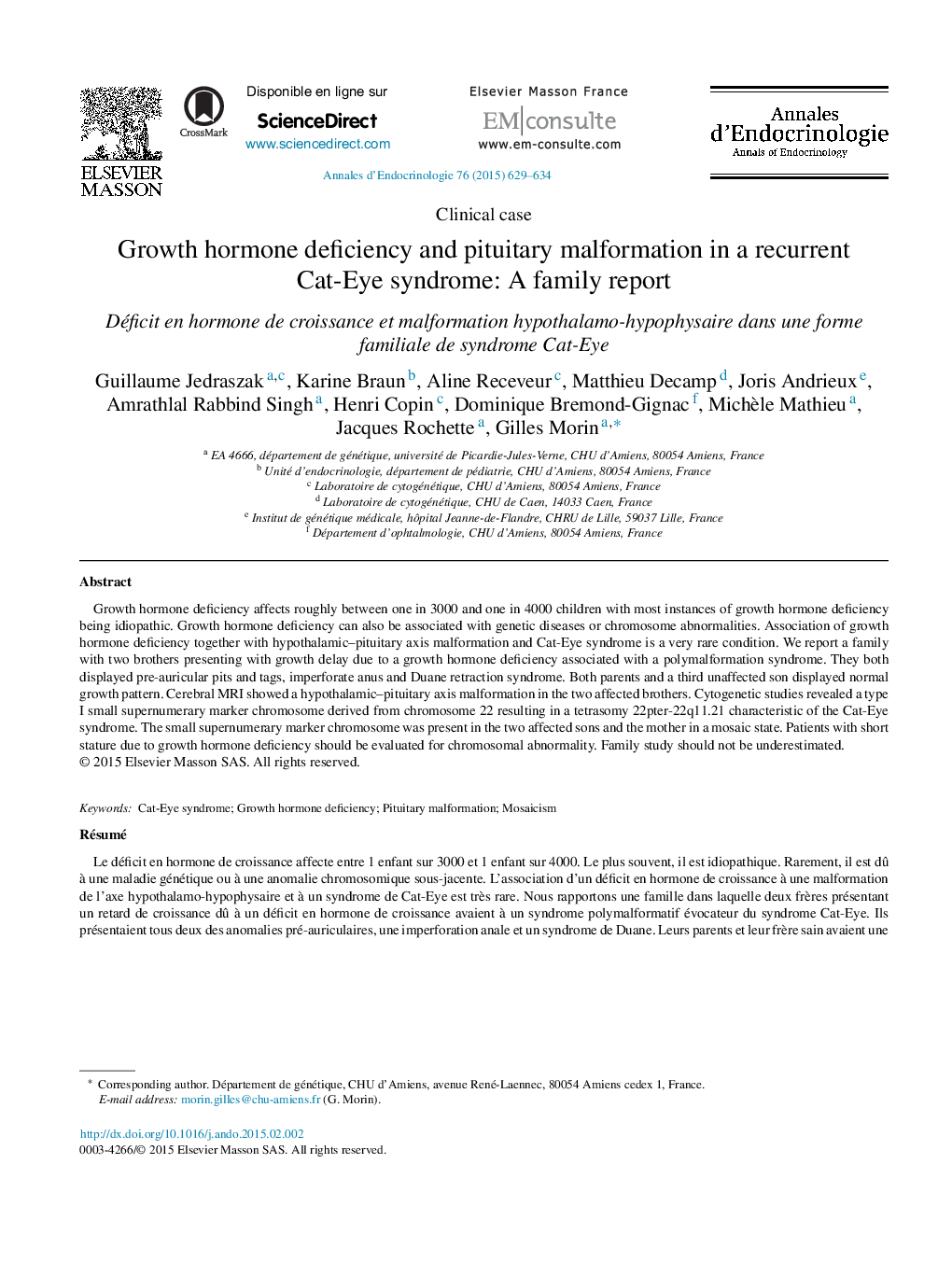| کد مقاله | کد نشریه | سال انتشار | مقاله انگلیسی | نسخه تمام متن |
|---|---|---|---|---|
| 3252288 | 1207055 | 2015 | 6 صفحه PDF | دانلود رایگان |
Growth hormone deficiency affects roughly between one in 3000 and one in 4000 children with most instances of growth hormone deficiency being idiopathic. Growth hormone deficiency can also be associated with genetic diseases or chromosome abnormalities. Association of growth hormone deficiency together with hypothalamic–pituitary axis malformation and Cat-Eye syndrome is a very rare condition. We report a family with two brothers presenting with growth delay due to a growth hormone deficiency associated with a polymalformation syndrome. They both displayed pre-auricular pits and tags, imperforate anus and Duane retraction syndrome. Both parents and a third unaffected son displayed normal growth pattern. Cerebral MRI showed a hypothalamic–pituitary axis malformation in the two affected brothers. Cytogenetic studies revealed a type I small supernumerary marker chromosome derived from chromosome 22 resulting in a tetrasomy 22pter-22q11.21 characteristic of the Cat-Eye syndrome. The small supernumerary marker chromosome was present in the two affected sons and the mother in a mosaic state. Patients with short stature due to growth hormone deficiency should be evaluated for chromosomal abnormality. Family study should not be underestimated.
RésuméLe déficit en hormone de croissance affecte entre 1 enfant sur 3000 et 1 enfant sur 4000. Le plus souvent, il est idiopathique. Rarement, il est dû à une maladie génétique ou à une anomalie chromosomique sous-jacente. L’association d’un déficit en hormone de croissance à une malformation de l’axe hypothalamo-hypophysaire et à un syndrome de Cat-Eye est très rare. Nous rapportons une famille dans laquelle deux frères présentant un retard de croissance dû à un déficit en hormone de croissance avaient à un syndrome polymalformatif évocateur du syndrome Cat-Eye. Ils présentaient tous deux des anomalies pré-auriculaires, une imperforation anale et un syndrome de Duane. Leurs parents et leur frère sain avaient une croissance normale. L’IRM cérébrale montrait une malformation de l’axe hypothalamo-hypophysaire. Les explorations cytogénétiques retrouvaient la présence d’un marqueur chromosomique surnuméraire dérivé du chromosome 22 de type 1, ayant pour conséquence l’existence d’une tétrasomie 22pter-22q11.21. Ce marqueur chromosomique surnuméraire était présent chez les deux frères atteints et leur mère à l’état de mosaïque. Devant un retard de croissance associé à un déficit en hormone de croissance, il est important de rechercher une anomalie chromosomique. De plus, l’importance de l’enquête familiale, en cas de syndrome Cat-Eye, ne doit pas être sous-estimée.
Journal: Annales d'Endocrinologie - Volume 76, Issue 5, October 2015, Pages 629–634
